Komentáře / Otázky (35)
![]() Odile napsala:
Odile napsala:
Bonjour, Merci pour ce modèle. Je ne comprends pas ce que veulent dire les chiffres placés au dessus des diagrammes : le 6 au dessus du A2, le 3 au dessus du A3, le 6 en dessous du A4, le 9 ai dessus du A4, le 6 en dessous du A5 et le 7 au dessus du A5. Pouvez vous m'expliquer ? D'avance merci pour votre réponse Odile
08.07.2025 - 21:00Odpověď DROPS Design :
Bonjour Odile, c'est le nombre de mailles a la fin du diagramme. Bon tricot!
09.07.2025 - 08:07
![]() Ann napsala:
Ann napsala:
Hej! Stickar Bellflowerdress st 1/3. Kommit till fram- och bakstycke. ”På nästa varv ökas det 1 maska före varje markör - läs ÖKNINGSTIPS” På ÖKNINGSTIPS står det ”det ökas växelvis före och efter varje markör” Min fråga är Ökar jag både före och efter markörerna på varv 1 och varv 4 osv eller Ökar jag bara före markören på varv 1, efter markören på varv 4, före markören på varv 8 osv? Tacksam för hjälp med mönstret!
06.07.2025 - 11:46Odpověď DROPS Design :
Hej Ann. På varv 1 ökar du före alla markörer (= 8 maskor ökade på ett varv) och på varv 4 ökar du efter alla markörer (= 8 maskor ökade på ett varv) osv. Mvh DROPS Design
07.07.2025 - 14:49
![]() Kim Heffernan napsala:
Kim Heffernan napsala:
Hello, how do I cast in the 4 stitches under the arm thread?
15.04.2025 - 08:15Odpověď DROPS Design :
Hello Kim Heffernan! Please look at videos and lessons for tutorials and tips on top of the pattern. How to cast on new stitches at side of work Happy knitting!
15.04.2025 - 15:47
![]() Naila napsala:
Naila napsala:
Altså jeg strikker som vanlig men setter inn merke etter de tre første maskene rett etter de jeg har felt på stolpen?
10.04.2025 - 09:29Odpověď DROPS Design :
Hei Naila, Ja, det er riktig, omgangen begynner 3 masker etter de felte maskene og du strikker rundt. God fornøyelse!
10.04.2025 - 10:03
![]() Naila napsala:
Naila napsala:
Hei. Hvordan forskyver jeg omgangen med 3 masker?
09.04.2025 - 18:06Odpověď DROPS Design :
Hej Naila, du flytter bare mærket, så du tæller fra midt bagpå når du skal dele arbejdet :)
10.04.2025 - 08:56
![]() Erla Erlingsdottir napsala:
Erla Erlingsdottir napsala:
Hi, in A when you work 3 stitches in the same stitch, it does not specify if the yarn over is knitted twisted or not on next round?
14.12.2024 - 03:54Odpověď DROPS Design :
Dear Erla, the yarn over is not knitted twisted, there should be a hole left. Here is a video explanation on how to work these stitches: https://www.garnstudio.com/video.php?id=1639&lang=en. Happy knitting!
15.12.2024 - 22:50
![]() Katarina napsala:
Katarina napsala:
Lagt upp halskantens 95 m (st 2 år). Är det första varvet man stickar från rätsidan?
03.12.2024 - 15:46Odpověď DROPS Design :
Hej Katarina, du bestemmer selv hvilken side du vil have som retside (tror de fleste lader den første pind være fra vrangen) :)
06.12.2024 - 14:11
![]() Erla Erlingsdottir napsala:
Erla Erlingsdottir napsala:
I'm so confused on the start using A1 and A2. On the wrong side am I also doing A1 then AT after the 5 garter stitches?
27.11.2024 - 05:26Odpověď DROPS Design :
Hi Erla, When working back from the wrong side, the pattern is worked in reverse, reading the diagrams from left to right: 5 garter stitches, then repeat row 2 in A.2 (from left to right) the correct number of times for your size, work row 2 in A.1 (from left to right) and 5 garter stitches. Hope this helps and happy knitting!
27.11.2024 - 06:48
![]() Marisa Blanc napsala:
Marisa Blanc napsala:
Pour l’empiècementbde la robe : Je dois tricoter 5 mailles au point mousse, À.1, répéter 24 fois À.2 et terminer par 5 mailles au point mousse. Je ne comprends pas ce que cela veut dire. Merci pour votre réponse. Marisa Blanc
01.11.2024 - 18:39Odpověď DROPS Design :
Bonjour Mme Blanc, tricotez (sur l'endroit): 5 m. point mousse (- à l'endroit), tricotez ensuite la maille du diagramme A.1 (- 1 m jersey), répétez ensuite 24 fois les 4 mailles du diagramme A.2 (on augmente 1 maille au 1er rang) et terminez par 5 m point mousse; sur l'envers, tricotez 5 m point mousse (à l'endroit), répétez les diagramme A.2 en lisant de gauche à droite et terminez par A.1 (1 m envers) et 5 m point mousse. Bon tricot!
04.11.2024 - 07:39
![]() Paula napsala:
Paula napsala:
Voiko alpacka langan vaihtaa Merino extra fine lankaan (50g = 105g) Bellflower dress-ohjeeseen
31.10.2024 - 11:49Odpověď DROPS Design :
Hei, DROPS Merino Extra Fine -lanka on Alpaca-lankaa paksumpi lanka, joten et voi vaihtaa kyseiseen lankaan. Voit kuitenkin käyttää vaihtoehtona jonkun muun lankaryhmään A kuuluvan langan, esim. DROPS Baby Merino.
31.10.2024 - 16:35
Bellflower Dress#bellflowerdress |
||||||||||||||||||||||||||||
 |
 |
|||||||||||||||||||||||||||
Baby a dětské šaty s kruhovým sedlem a krajkovým vzorem pletené shora dolů z příze DROPS Alpaca. Velikost 0 - 4 roky.
DROPS Baby 43-11 |
||||||||||||||||||||||||||||
|
------------------------------------------------------- VYSVĚTLIVKY: ------------------------------------------------------- VROUBKOVÝ VZOR: Pleteme stále hladce, lícové i rubové řady. 1 vroubek = 2 řady hladce. VZOR: Viz schémata A.1 až A.6. Zvolte si schéma pro požadovanou velikost. Zobrazeny jsou všechny řady vzoru nahlížené z lícové strany. TIP – PŘIDÁVÁNÍ (sukně): Přidáváme střídavě PŘED a ZA každou značkou (takže poprvé přidáme PŘED každou značkou, podruhé ZA každou značkou atp.). PŘED KAŽDOU ZNAČKOU přidáme 1 oko takto: pleteme až po poslední 1 oko před značkou, 1x nahodíme. ZA KAŽDOU ZNAČKOU přidáme 1 oko takto: pleteme až ke značce, 1x nahodíme. V následující kruhové řadě pleteme nahození hladce za zadní nit, aby se v pletenině netvořily dírky. Nová oka pak pleteme lícovým žerzejem. KNOFLÍKOVÉ DÍRKY: Knoflíkové dírky vyplétáme v levé léze (na šaty se díváme, jako by byly oblečené). Pleteme lícovou řadu: 1 krajové oko, 1 oko hladce, 2 oka spleteme hladce, 1x nahodíme. V následující rubové řadě pleteme nahození hladce – vznikne dírka. První dírku vypleteme ve výši 1,5-2 cm. Druhou pak ve výši 5-6 cm. ------------------------------------------------------- POPIS PRÁCE: ------------------------------------------------------- ŠATY – JAK BUDEME POSTUPOVAT: Pleteme shora dolů, nejprve v řadách až ke konci rozparku pro zapínání za krkem, pak pokračujeme v kruhových řadách. Po dokončení sedla oddělíme rukávky a trup. Trup/sukni dopleteme v kruhových řadách na kruhové jehlici, rukávky dokončíme v kruhových řadách na ponožkových jehlicích. LEM PRŮKRČNÍKU: Na kruhovou jehlici č.2,5 nahodíme přízí DROPS Alpaca 71-77-83-89 (95-95) ok a pleteme v řadách pružným vzorem, takto: 5 ok VROUBKOVÝM VZOREM – viz výše, *1 oko hladce, 2 obrace*, *-* opakujeme až po posledních 6 ok, 1 oko upleteme hladce a 5 ok vroubkovým vzorem. V tomto rozvržení pokračujeme do výše 1 cm. Pak pleteninu převedeme na kruhovou jehlici č.3. SEDLO: Následující lícovou řadu pleteme takto: 5 ok vroubkovým vzorem, vzor A.1, vzor A.2 – sekvenci vzoru opakujeme 20-22-24-26 (28-28)x, 5 ok vroubkovým vzorem. V tomto rozvržení pokračujeme a SOUČASNĚ vyplétáme KNOFLÍKOVÉ DÍRKY – viz výše. Po dokončení 1 celé sekvence vzoru A.1 a A.2 (na výšku) máme v řadě 131-143-155-167 (179-179) ok. Díl měří asi 3-3-3-4-4-4 cm. Pokračujeme vzorem, takto: 5 ok vroubkovým vzorem, vzor A.3, vzor A.4 – sekvenci vzoru opakujeme 19-21-23-25 (27-27)x, vzor A.5 a 5 ok vroubkovým vzorem. SOUČASĚ v poslední řadě vzorů A.3 až A.5 přidáme rovnoměrně 0-0-0-0 (0-10) ok. Po dokončení celé sekvence vzorů A.3 až A.5 (na výšku) máme v řadě 191-209-227-245 (263-273) ok. Díl měří asi 10-10-10-12-12-12 cm. V následující lícové řadě uzavřeme prvních 5 ok zbytek řady dopleteme hladce = 186-204-222-240 (258-268) ok. Dál pleteme v kruhových řadách lícovým žerzejem. Začátek kruhové řady posuneme o 3 oka, takže leží uprostřed zadního dílu. Ve výši 11-11-12-13 (14-15) cm oddělíme trup/sukni a rukávky: 26-29-30-34 (37-39) ok upleteme hladce, následujících 40-44-50-52 (54-56) ok odložíme na pomocnou jehlici (= rukáv), nahodíme 4 nová oka (= podpaží), 53-58-61-68 (75-78) ok upleteme hladce, dalších 40-44-50-52 (54-56) ok odložíme na pomocnou jehlici (= rukáv), nahodíme 4 nová oka (= podpaží) a posledních 27-29-31-34 (38-39) ok upleteme hladce. SUKNĚ: = 114-124-130-144 (158-164) ok. Lícovým žerzejem upleteme v kruhových řadách ještě 3 cm výšky. Pak rozmístíme do pleteniny 8 značek v těchto rozestupech: 7-7-8-9 (10-10) ok upleteme hladce, vložíme značku, *14-15-16-18 (19-20) ok upleteme hladce, vložíme značku, 14-16-16-18 (20-21) ok upleteme hladce, vložíme značku*, *-* zopakujeme ještě 2x, 15-16-17-18 (20-20) ok upleteme hladce, vložíme značku a 8-8-9-9 (11-11) ok upleteme hladce. Značky během práce snímáme vždy do aktuálně pletené kruhové řady. V následující kruhové řadě přidáme 1 oko PŘED každou značkou – viz TIP - PŘIDÁVÁNÍ! Takto přidáváme v každé 4.-4.-5.-5. (6.-6.) kruhové řadě, celkem 9-10-11-12 (12-13)x = 186-204-218-240 (254-268) ok. Když díl měří 14-18-21-24 (25-28) cm od podpaží, pleteme 1 kruhovou řadu hladce a SOUČASNĚ přidáme rovnoměrně 6-4-6-0 (2-4) ok = 192-208-224-240 (256-272) ok. Pak pleteme v kruhových řadách vzor A.6. Po dokončení celé sekvence vzoru A.6 (na výšku) máme v kruhové řadě 288-312-336-360 (384-408) ok. Poté všechna oka hladce uzavřeme. Šaty měří asi 36-40-44-48 (50-54) cm (od ramene). RUKÁVKY: Odložených 40-44-50-52 (54-56) ok jednoho rukávu vrátíme z pomocné jehlice zpět na ponožkové jehlice č.3 a navíc k nim nabereme po 1 oku z každého ze 4 nově nahozených ok v podpaží = 44-48-54-56 (58-60) ok. Pleteme v kruhových řadách lícovým žerzejem do výše 1-1-1-2-2-2 cm. Pak upleteme 1 kruhovou řadu hladce a SOUČASNĚ přidáme rovnoměrně 4-3-3-4 (5-6) oka = 48-51-57-60 (63-66) ok. Pleteninu převedeme na ponožkové jehlice č.2,5. Pleteme lem pružným vzorem 1/2 (tj. střídáme 1 oko hladce, 2 obrace). Když je lem vysoký 4-4-4-5-5-5 cm, všechna oka hladce uzavřeme. Stejným způsobem upleteme i druhý rukávek. DOKONČENÍ: Pravou (uzavřenou) légu položíme pod levou légu a přišijeme. Na pravou légu přišijeme knoflíky. |
||||||||||||||||||||||||||||
Vysvětlivky ke schématu |
||||||||||||||||||||||||||||
|
||||||||||||||||||||||||||||
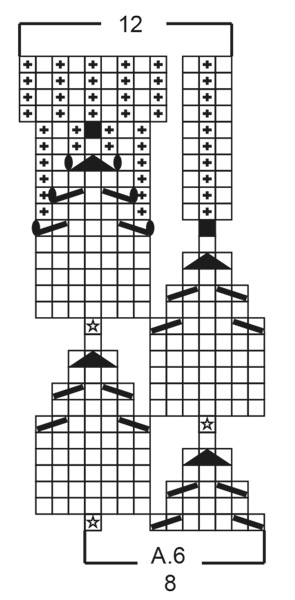
|
||||||||||||||||||||||||||||
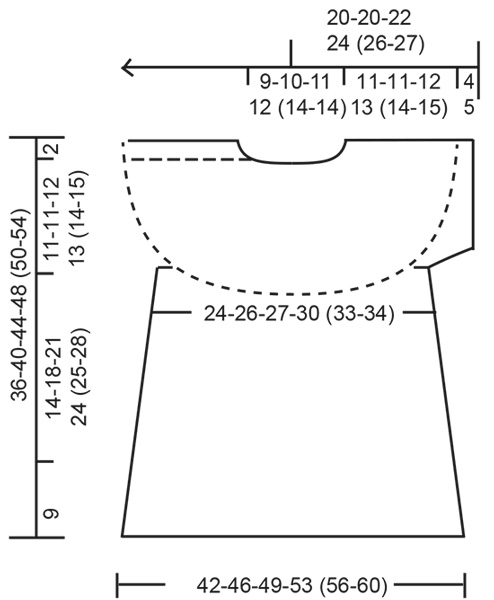
|
||||||||||||||||||||||||||||
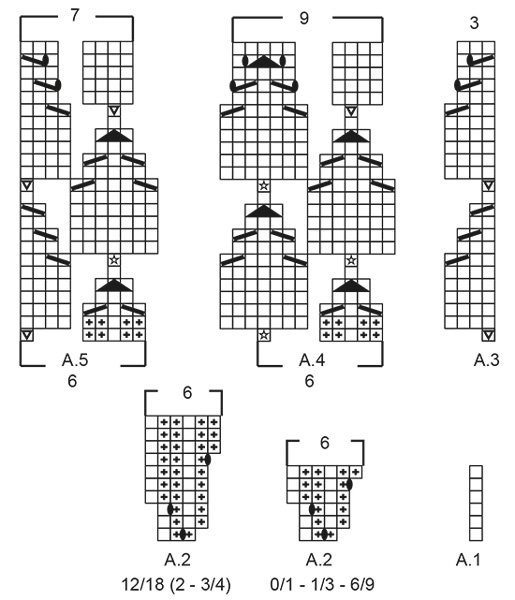
|
||||||||||||||||||||||||||||
Dokončili jste tento model?Pak označte své fotky tagem #dropspattern #bellflowerdress nebo je pošlete do galerie #dropsfan. Potřebujete s tímto návodem poradit?Otevřete-li si návod na stránce garnstudio.com, najdete tam 28 výukových video-ukázek, Komentáře/Dotazy a další užitečné informace. © 1982-2025 DROPS Design A/S. Vyhrazujeme si veškerá práva. Tento dokument, včetně všech jeho dílčích částí, podléhá autorským právům. Podrobnější komentář k možnostem užití našich návodů najdete dole pod každým návodem na našich stránkách. |
||||||||||||||||||||||||||||







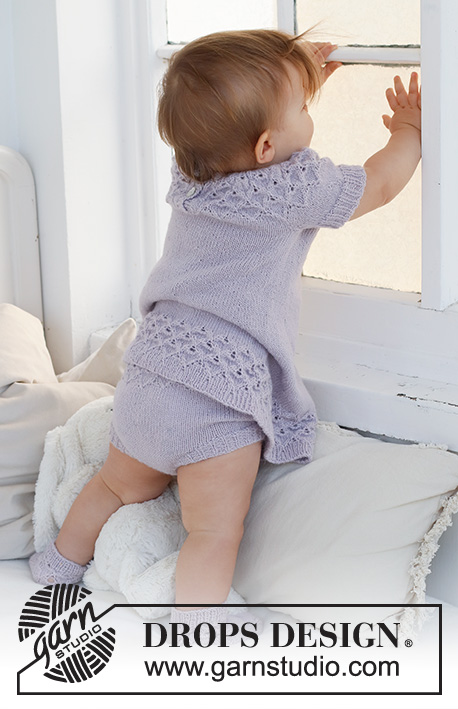



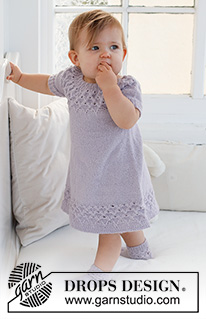

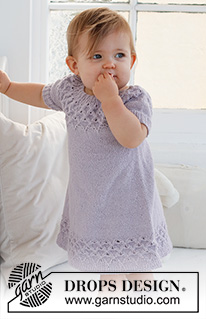
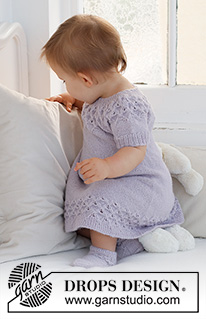









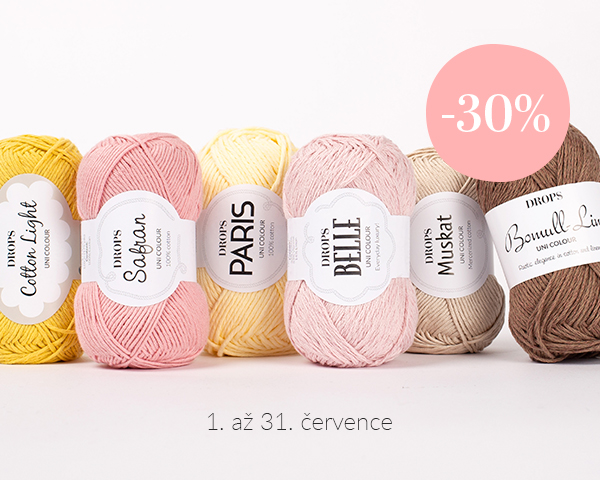




















































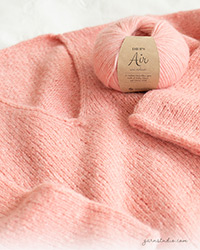


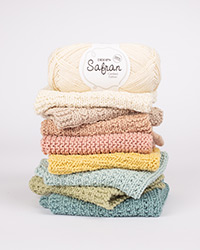
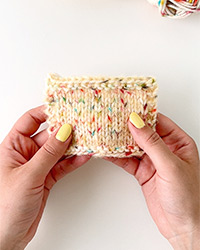
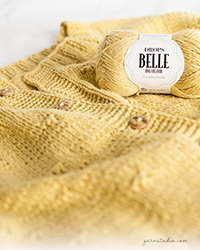
Přidejte komentář k návodu DROPS Baby 43-11
Rádi bychom věděli, co si o tomto modelu myslíte!
Pokud se chcete na něco zeptat, dbejte prosím na to, abyste ve formuláři níže vybrali správnou kategorii - díky tomu se dříve dozvíte, co potřebujete vědět. Povinná pole jsou označena *.